Methodology underlying the 27 case studies
The case studies were collected by a team of researchers from Wageningen University and Research and by Mariette McCampbell, to take stock of agricultural automation technologies around the world and analyse the barriers and drivers to their adoption. Each case represents one company or organization which has developed and/or implements one or more solutions that fit the definition of agricultural automation presented in Chapter 1. Case studies were purposely selected based on the following criteria: (i) covering all SOFA regions (Ceccarelli et al., 2022) or representative of the Global South (i.e. Eastern and South-eastern Asia, Southern Asia, sub-Saharan Africa, Latin America and the Caribbean) (McCampbell, 2022); (ii) covering the following agricultural production systems – crops, livestock, aquaculture and agroforestry; (iii) representative of a novel yet scalable, or already scaled, agricultural automation solution; and (iv) targeting small- to large-scale agricultural producers. Information was collected through interviews with key informants, and complemented with information on agriculture, literacy, automation, and policy and legislation from secondary national data sources and available literature. Interviews were conducted virtually in English or Spanish and were audio- and video-recorded for transcription and analysis. For each solution, the interviews focused on the economic, environmental and social sustainability, and the barriers to and drivers of adoption of that solution. Thematic analysis was performed on interview data, using a code frame.
While the 27 selected case studies may not fully represent the wide variety of technologies available, they provide a comprehensive view of the global trends and developments in agricultural automation. Case study data were used as input for two background papers, with Ceccarelli et al. (2022) using data from 22 cases and McCampbell (2022) using data from 10 cases; 5 cases were covered by both papers.
SOURCES: McCampbell, 2022;1 Ceccarelli et al., 2022.2
Summary of case studies
Abaco
 Year of establishment 2013
Year of establishment 2013 Current number of users Not disclosed
Current number of users Not disclosed Operating in Europe (based in Italy), Central Asia, South America
Operating in Europe (based in Italy), Central Asia, South America Targeted sectors Crops, forestry, livestock
Targeted sectors Crops, forestry, livestockServices provided A digital platform in the field of precision agriculture that gathers and shares land, agriculture and weather data. Other applications are in the organic farming sector and for territorial management for use by national and local governments.
Targeted customers and users Farmer organizations, individual farmers (both small- and large-scale) and national and local governments. Other targeted groups include insurance companies, soil laboratories and uncrewed aerial vehicle (UAV) operators.
Business model and financial sustainability Revenues generated from multitier subscriptions (farmers) and service contracts (governments). The offer is tailored to the needs of the customer and ranges from a freemium model with limited functionalities to a paid subscription based on the size of the holding and other parameters.
Drivers Demand for precision agriculture technologies and the need to comply with environmental standards and regulations. For small producers, there is the possibility of free use for a limited period.
Barriers Time required to learn how to operate the platform and the need to translate the platform into different languages for scaling in other countries. In some countries (e.g. in Africa), local languages, in addition to low penetration of smartphones and limited IT infrastructure, are seen as barriers to customizing the solutions.
Policy as a barrier or enabler No policy-related adoption barriers are noted. Policy-related adoption drivers are the European Union’s Common Agricultural Policy (CAP) and its Green Deal policy goals with corresponding subsidizing mechanisms, as well as specific regulations on pesticide use.

Interviewees Giovanna Roversi and Fabio Slaviero
AeroboticS
 Year of establishment 2014
Year of establishment 2014 Current number of users 300
Current number of users 300 Operating in 18 countries, including Australia, Chile, Peru, Portugal, South Africa, Spain, United States of America
Operating in 18 countries, including Australia, Chile, Peru, Portugal, South Africa, Spain, United States of America Targeted sector Fruit and nut trees
Targeted sector Fruit and nut treesServices provided Use of sensors and drone and satellite imagery for early detection of pests and diseases. Aerobotics also offers location-specific datasets necessary to use variable rate technology (VRT) for irrigation and fertilizer requirements, and measures tree growth and performance, estimating yields and planning for harvest.
Targeted customers and users Large-scale fruit and nut farmers in 18 (mostly high-income) countries; companies providing insurance to farmers and fruit juice processors and retailers.
Business model and financial sustainability Based on an annual subscription for multitier services. Growers pay per hectare (or per acre), at yearly or monthly intervals. Different services are bundled according to the needs of the customer, with the cost depending on the attributes required. A different business model applies to crop insurance companies, who pay a fee per hectare/acre to collect data for inspection or auditing purposes. About 95 percent of the company’s revenue is generated in the United States of America, where 40 percent comes from the crop insurance market. Investment in the company has so far been in the form of private equity.
Drivers Demand for variable rate application of agrochemicals, thus economizing on usage and mitigating their negative environmental impacts. In the United States of America, farmers embrace technological innovations and digital solutions, and thus Aerobotics.
Barriers Lack of awareness among farmers.
Policy as a barrier or enabler In the United States of America, regulations on drones are clear and their use is permitted, while in South Africa complying with regulations proves very expensive.

Interviewee Benjamin Meltzer
AgrinapsiS
 Year of establishment 2020
Year of establishment 2020 Current number of users Unknown
Current number of users Unknown Operating in Bolivia (Plurinational State of), Costa Rica, Ecuador, Guatemala, Mexico
Operating in Bolivia (Plurinational State of), Costa Rica, Ecuador, Guatemala, Mexico Targeted sectors All
Targeted sectors AllServices provided A social media platform specializing in agriculture that enables farmers to access knowledge and information by interacting with experts and practitioners. Users verify and rate the information so that Agrinapsis can ensure it can be trusted and is of high quality. Agrinapsis also enables e-commerce among farmers to sell their agricultural output and buy inputs as required (e.g. seeds, fertilizers).
Targeted customers and users Mainly small-scale farmers, with a particular focus on women and youth. However, everyone involved in agriculture – from academia and students, to agronomists – can benefit from the solution. Use of the e-commerce platform is enabled only for farmers; large corporate farms are not allowed to use it.
Business model and financial sustainability Funded by the Inter-American Institute for Cooperation on Agriculture. As a non-profit organization, it has no revenue from services provided. Since the project is in its infancy, it is difficult to assess its sustainability.
Drivers A wealth of unshared knowledge derived from the experiences of small-scale producers. Thus, Agrinapsis aims to make this knowledge accessible across countries after verifying its validity. It is seen as a tool to democratize knowledge and drive social and environmental change. Increased digital literacy, particularly among young people, bringing women together (especially older women) and the rise of influencers promoting Agrinapsis, have all played an important role in disseminating the platform, especially since it is the first agriculture-specialized social media platform in Latin America.
Barriers Lack of internet access in remote and rural areas, despite national and international efforts to increase connectivity. Digital illiteracy is still high in rural areas, particularly among the elderly; integration of languages needs to be inclusive (e.g. in the Plurinational State of Bolivia alone there are eight official languages).
Policy as a barrier or enabler Political uncertainty can affect the sustainability of the platform since it is funded by the Inter-American Institute for Cooperation on Agriculture, which depends on support from its 34 member states.

Interviewee Santiago Velez
Aquaconnect
 Year of establishment 2018
Year of establishment 2018 Current number of users 60 000
Current number of users 60 000 Operating in India
Operating in India Targeted sector Aquaculture (shrimp)
Targeted sector Aquaculture (shrimp)Services provided Digital aquaculture solutions to monitor and document performance on aquaculture farms, link farmers with input providers and produce buyers, and support access to finance, insurance and markets. Aquaconnect also maintains physical centres (AquaHUBs) in communities, enhancing its last-mile connectivity, where producers can buy inputs, sell produce and obtain advisory services.
Targeted customers and users Small- and medium-scale shrimp farmers.
Business model and financial sustainability Free use for farmers of solutions such as the Aquaconnect App, the e-bazaar and web store. Revenue is generated from the stakeholders with whom the farmers are connected (e.g. banks, insurers, processors, input providers). Revenue is generated on a per transaction basis, through the linking services and data intelligence provided. In addition, equity funding is raised and used to expand operations. So far, the business model is profitable.
Drivers Demand created from low productivity and inefficient market linkages. The service allows for enhanced environmental sustainability, as well as efficiency, predictability and transparency in the value chain. Interest by farmers in digital technologies is slowly increasing. Having a team physically on the ground facilitates adoption and provides technical backstopping.
Barriers Poor capacity of farmers to operate digital technologies. The high cost of advanced technology, such as internet of things (IoT) devices, limits affordability. There is a ceiling on the size of loans farmers can obtain per hectare of land and it is insufficient to invest in equipment and aquaculture production in general. The premium rates for insurance for aquaculture are significantly higher than for crop production.
Policy as a barrier or enabler The Government of India has allocated USD 3 billion for the modernization of agriculture, including aquaculture fishery value chains. There is interest from the Government, expressed in the form of policies, to support start-ups that implement technologies across the value chain. However, there are currently no subsidies for aquaculture and no specific subsidies for IoT tools.
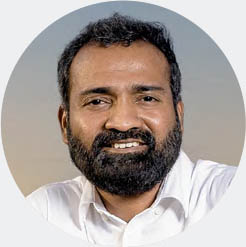
Interviewee Sudhakar Velayutham
Atarraya
 Year of establishment 2019
Year of establishment 2019 Current number of users Unknown
Current number of users Unknown Operating in Mexico, United States of America
Operating in Mexico, United States of America Targeted sector Aquaculture (shrimp)
Targeted sector Aquaculture (shrimp)Services provided Shrimpbox: an automated and controlled shrimp farm, located in shipping containers – “shrimp boxes”. Each shrimp box uses sensors, machine learning, big data, biotechnology and robotics to control aquaculture operations, including nutrition intake, water quality and oxygen content.
Targeted customers and users Mostly shrimp producers, but also poultry farmers who want to switch to shrimp farming. Restaurants, universities, corporations and consumers who want to access and serve fresh, sustainable seafood are also targeted. Some restaurants are also partners of Atarraya.
Business model and financial sustainability Not yet profitable because still in the early phase. Shrimpbox previously relied on subsidies from the Government of Mexico, while there is now growing interest from private investors. The business model is still to be decided. Atarraya does not seem inclined to operate the solution directly due to difficulties in scaling. Contract farming is the preferred option, with Atarraya leasing the solution; however, to make this option attractive, the technology transfer needs to be seamless. Clients (from China) are interested in purchasing Shrimpbox, but Atarraya is not ready to pursue this.
Drivers The high demand for shrimps worldwide coupled with the environmentally harmful practices of most shrimp farms. Current practices are associated with high losses triggered by rapidly spreading diseases and also cause the destruction of mangrove forests, an important carbon sequester worldwide. In contrast, Atarraya’s service improves shrimp production in a sustainable and flexible manner by, for example, not needing to be close to an ocean. A very important and promising factor for increased adoption is the generational shift: young farmers are much more open to implementing new technologies.
Barriers Scepticism of older shrimp producers, coupled with remoteness, leading to resistance to a change in business model. Also poor road infrastructure is an important barrier given the heavy logistics required.
Policy as a barrier or enabler Public research and development grants helped in the early stages but have now come to an end.

Interviewee Daniel Russek
CATTLER
 Year of establishment 2019
Year of establishment 2019 Current number of users Unknown
Current number of users Unknown Operating in Latin America and the Caribbean, United States of America
Operating in Latin America and the Caribbean, United States of America Targeted sector Livestock (beef)
Targeted sector Livestock (beef)Services provided Initially two stand-alone products: (i) an animal weight predictor; and (ii) automation of barn management. It has since developed a whole automated cattle farm management system, whereby sensors, satellite imagery, electronic tagging and feeding systems perform operations from automatic feeding and prediction of daily growth rates and nutrition, to health scans and diagnosis.
Targeted customers and users Mainly medium- and large-scale cattle farmers with between 2 000 and 40 000 heads of cattle, who mostly operate in the beef (feedyard) sector. It is now also potentially targeting operators in the cow–calf and rangeland-based stocker segments.
Business model and financial sustainability Revenue still generated from selling the two stand-alone products, accessible through a mobile and desktop software platform, despite increasing focus on the whole automated system. To operate this, Cattler switched to a freemium model: the entry level is free, but it includes only basic product features. If users want to add devices or features, they need to take out a subscription which depends on which functionalities are included. Although the number of users is not known, the number of animals covered is estimated at 90 million in the United States of America, 200 million in Brazil, and 50 million in Argentina.
Drivers Reduced costs as it helps automate several operations. Farmers in the sector increasingly need to perform these operations in a more integrated way to improve efficiency.
Barriers Slow adoption rate in the United States of America compared with Argentina. The reason given is that Argentinian farmers need to be more dynamic and competitive on the international market.
Policy as a barrier or enabler Easy access to credit by farmers is an enabler. In Argentina, political uncertainty is a barrier, while in the United States of America, protective policies may discourage farmers from adopting new solutions.

Interviewee Ignacio Albornoz
Coopecan
 Year of establishment 2008
Year of establishment 2008 Current number of users 1 500
Current number of users 1 500 Operating in Peru
Operating in Peru Targeted sector Livestock (alpaca)
Targeted sector Livestock (alpaca)Services provided Digital services – from advisory services, pasture monitoring and animal traceability, to blockchain (introduced in 2020) – to improve and certify animal welfare standards and the quality of the alpaca fibre, thus increasing its value.
Targeted customers and users Mainly small-scale breeders in the Peruvian highlands with herds of 50–100 animals and annual revenues of USD 1 500–1 800. Intermediaries along the alpaca fibre value chain, including distributors, suppliers and consumers who are concerned about the origin of the product are also targeted.
Business model and financial sustainability Operative since 2008. In the past decade, it has increased its reach and developed important projects to improve working conditions, offering fair pay and protecting animal welfare. External funds from donors sustain the service and it does not aim to generate profits.
Drivers Increasing demand for transparency and animal welfare standards in the alpaca fibre value chain, translating into a higher-value product.
Barriers Lack of internet access in remote areas and absence of national IT companies to support the service, in addition to the ageing of alpaca breeders. The majority are currently women and the elderly, as young people are not interested in continuing alpaca farming due to the working conditions and remoteness. They prefer to acquire an education in the cities and then find better paid jobs.
Policy as a barrier or enabler Political uncertainty translates into frequent policy changes, and this inhibits support to the sector.
Interviewee Dagoberto Fernandez
Cropin
 Year of establishment 2010
Year of establishment 2010 Current number of users 225
Current number of users 225 Operating in Global presence (primarily India and sub-Saharan Africa)
Operating in Global presence (primarily India and sub-Saharan Africa) Targeted sector Crops
Targeted sector CropsServices provided Software platform that provides a complete farm and farmer management system. It uses technologies such as big data analytics, AI, IoT sensors and remote sensing to provide insights across different levels of the value chain and help managers make better decisions.
Targeted customers and users Farming companies, seed production companies, agri-input companies, fruit and vegetable exporters, commodity traders, banks, financial and microlending institutions, crop insurance providers, government and development institutions and agencies.
Business model and financial sustainability Client portfolio split between the enterprise sector and the development sector. Most revenue is generated from the enterprise sector (60–65 percent), which includes clients working with smart farming, digital marketplace and supply chain traceability. For the development sector, it provides hyper local farm and farmer data to government, banks and development institutions in exchange for a grant. Data ultimately help clients to assess the creditworthiness of small-scale producers and help banks to provide loans and insurance to farmers.
Drivers Significant data and information gaps leading to information asymmetries throughout value chains, hence the call for data-driven software. Enterprise sector clients leverage their services in automation and mechanization of individual farms to maximize value per hectare and farm-level traceability. Development sector clients leverage their aggregated data models and data science and also influence the industry with data-driven policy advice.
Barriers Lack of digital assets, poor literacy and data connectivity, risk aversion.
Policy as a barrier or enabler The Ministry of Agriculture and Farmers Welfare in India has developed major digital applications under the India Digital Ecosystem of Agriculture (IDEA) to boost technology adoption among farmers. The National Agriculture Market (eNAM) is a pan-India electronic trading portal to create a unified national market for agricultural commodities. Finally, the Direct Benefit Transfer (DBT) Central Agri Portal, launched in 2013, is a unified central portal for agricultural schemes across the country. The portal helps farmers adopt modern farm machinery through government subsidies.
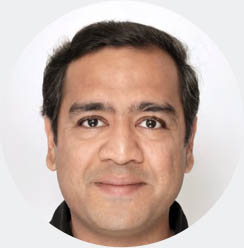
Interviewee Arjun Goyal
Egistic
 Year of establishment 2018
Year of establishment 2018 Current number of users Almost 1 500
Current number of users Almost 1 500 Operating in Kazakhstan
Operating in Kazakhstan Targeted sector Crops
Targeted sector CropsServices provided Integrated solution for monitoring and managing crop areas, using remote sensing technology, high precision satellite navigation, geoinformation systems, and machine learning technologies. Services include: analytics (yield forecast, crop rotation history); satellite images of fields; digital advisory consultations; global positioning satellite (GPS) monitoring system with tractors and combine harvesters; management of agricultural activities; and agrochemical soil analysis.
Targeted customers and users Mostly large-scale farmers but also food distributors and agrochemical and fertilizer companies. Most registered users of the platform are in the 18–45 age group.
Business model and financial sustainability Revenues generated through annual subscriptions for the platform. As of 2022, the platform is financially sustainable and attracting investors. In 2021, it received the last round of grants. The subscription also covers technical support such as webinars, videos and a user guide.
Drivers Increasing demand among large-scale farmers for automated farm management solutions. They receive a high return on their farm investments due to fuel savings on farm machinery.
Barriers Poor internet connectivity in rural areas.
Policy as a barrier or enabler The company wishes to scale up services by integrating its data with government data, but current policy frameworks have no policies for public–private partnerships.

Interviewee Zhandos Kerimkulov
Food Autonomy
 Year of establishment 2018
Year of establishment 2018 Current number of users 2
Current number of users 2 Operating in Hungary
Operating in Hungary Targeted sectors Microgreens, leafy greens, seedlings and cosmetic plants in vertical farming settings
Targeted sectors Microgreens, leafy greens, seedlings and cosmetic plants in vertical farming settingsServices provided Various crop production technologies, recipes and the corresponding hardware and software solutions for vertical farming, in addition to full-scale remotely controlled modular vertical farms for industry and research applications. All technologies offered are available either as separate services or fully integrated into vertical farms.
Targeted customers and users Small-, medium- and large-scale users for germination, research and production.
Business model and financial sustainability Current funds for the vertical farming business primarily via internal investment from Food Autonomy’s indoor plant cultivation lighting business arm. A grant from the Government of Hungary supports the research farm facility. The FaaS (farming as a service) model operates the farm on the user’s behalf, while the PaaS (plants as a service) model offers the client dedicated production capacity.
Drivers Increasing demand for organic, sustainable, high-quality and affordable produce; increasing interest in vertical farming; low energy and water use; possibility to produce food locally next to cities and in arid regions.
Barriers High initial investment cost.
Policy as a barrier or enabler The Government of Hungary is promoting automation and data-driven operations in agriculture. However, while it supports locally produced food, it does not directly support vertical farming. Furthermore, regulations do not identify vertical farming as organic, even if production takes place in a chemical-free environment.

Interviewee Zoltan Sejpes
GARBAL
 Year of establishment 2017
Year of establishment 2017 Current number of users More than 500 000
Current number of users More than 500 000 Operating in Burkina Faso, Mali (and soon the Niger)
Operating in Burkina Faso, Mali (and soon the Niger) Targeted sectors Livestock (pastoralists), arable crops
Targeted sectors Livestock (pastoralists), arable cropsServices provided An integrated digital solution providing small-scale producers and pastoralists in the Sahel region with highly contextualized advisory information about suitable grazing lands, herd migration, weather, farming practices, and markets. The solution uses satellite and other data. It also has a digital marketplace to obtain fodder and sell milk and cereals.
Targeted customers and users Small-scale farmers, pastoralists, traders and herd owners. Women represent 22–30 percent of users.
Business model and financial sustainability Based on a public–private partnership, crucial to overcome donors’ and funders’ risk aversion to developing innovative digital solutions in fragile contexts. GARBAL relies primarily on donor funding and contributions from project partners. Revenues come from calls to the call centre (generated based on airtime) or from modest payments to use the unstructured supplementary service data (USSD). Despite this income, which is reinvested in the solution, it is not near break-even point. The business strategy is to generate new revenue streams through the digital marketplace and a digital finance solution.
Drivers Traditional knowledge of farmers and herders challenged by climate change and insecurity, and farmers’ livelihoods threatened. The solution can potentially improve access to markets and support farmers’ resilience and adaptation capacities in the face of shocks. Being a public–private partnership is key for end users to accept the solution. Capacity building and penetration of mobile phones – even though most are not smartphones – also enable adoption. Finally, face-to-face engagement with local farmers, pastoralists and their organizations is fundamental to gain trust and increase outreach.
Barriers Differing needs between countries, hence essential to adapt the solution to the context of each country. Political unrest and insecurity in some countries is a challenge, as is lack of digital infrastructure (e.g. energy, connectivity, smartphones). Additional challenges are lack of skills, poor awareness of the benefits of the technology, and lack of data quality and management.
Policy as a barrier or enabler Support from the local ministries (e.g. sharing databases) has been instrumental in providing content for the advisory service. However, political unrest and insecurity hamper investments in some countries.
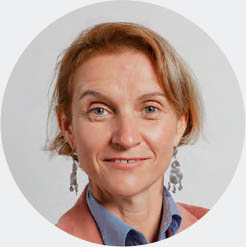
Interviewee Catherine Le Come
GROBOMAC
 Year of establishment 2014
Year of establishment 2014 Current number of users Not applicable (solution still being tested)
Current number of users Not applicable (solution still being tested) Operating in India
Operating in India Targeted sector Cotton
Targeted sector CottonServices provided A single person-operated, electric-powered semi-autonomous automatic precision cotton-picking machine, which can pick cotton, without damaging the crops, using a high-speed robotic arm assisted by computer vision and AI technology. It allows precision harvesting of multi-bloom cotton in multi-row cropping systems.
Targeted customers and users Initially medium- and large-scale cotton growers, with the possibility of later including small-scale farmers. In the long term, the machine can be run by farm producer organizations, farmers’ collectives and hiring centres, a service organization being promoted in India for running farm operations in a pay-per-use model. The machine is intended to be primarily operated by women, who are the main workforce in cotton picking in India.
Business model and financial sustainability Not yet commercial. The company is primarily supported by personal investments and grants. In the future, the aim is to sell individual robots directly to customers and, in the longer term, to operators and service providers.
Drivers Lack of manual labour during peak seasons.
Barriers Benefits of the technology still to be fully perceived by investors. In addition, the return on investment can take a long time.
Policy as a barrier or enabler The Government of India encourages agricultural start-ups through grants. For example, GRoboMac received a grant of about USD 30 000. The company also submitted a proposal for cotton picking following a request for proposals for robotics as a service in the southern Indian state of Telangana.

Interviewee Manohar Sambandam
Harvest Croo Robotics
 Year of establishment 2013
Year of establishment 2013 Current number of users Unknown
Current number of users Unknown Operating in United States of America
Operating in United States of America Targeted sector Strawberries
Targeted sector StrawberriesServices provided Robotic harvesters that autonomously navigate through a farm to pick, inspect, clean and pack strawberries. Each harvester has 16 independent “arms” that perform the agricultural activities autonomously along 16 rows.
Targeted customers and users Large-scale strawberry farmers (> 10 ha).
Business model and financial sustainability Solution is not yet commercialized. Funds come from private investors and financial institutions, with the public sector playing a minor role. The business model it follows is a pay-as-you-go service, where the amount depends on the volume harvested. If there is high demand, it is projected that early contributors to the investment will receive priority.
Drivers The lack and increasing cost of labour, especially during peak harvesting periods. Consequently, about 70 percent of strawberry growers in the country have invested in the company. The technology has been successfully tested on real farms.
Barriers Scaling the manufacturing of necessary hardware and software.
Policy as a barrier or enabler The National Science Foundation offers limited support. Policy is seen neither as a strong driver nor as an explicit barrier.

Interviewee Gary Wishnatzki
HortiKey
 Year of establishment 2015
Year of establishment 2015 Current number of users Not disclosed
Current number of users Not disclosed Operating in Netherlands
Operating in Netherlands Targeted sector Tomatoes
Targeted sector TomatoesServices provided Integrated system comprising a self-driving robot equipped with cameras, smart software using algorithms, and AI to provide reliable data and crop estimations, including the number and ripeness of tomatoes, through daily measurements with no need for new infrastructure. The insights from the data, combined with climatic and meteorological data, are used for business-specific harvest forecasts 1–4 weeks in the future.
Targeted customers and users Medium- to large-scale commercial tomato growers in controlled environments (e.g. greenhouses).
Business model and financial sustainability Revenues generated from sales of the robots and monthly subscription fees for the software. Alternatively, both are available for a total monthly fee under a service contract. Developments are currently supported by investments from shareholders.
Drivers Value for growers of crop forecasting information. Variability in tomato prices calls for accurate estimates of production capacity and there is a need for expertise in tomato growing as farm sizes increase.
Barriers Scepticism of some tomato growers regarding the technology. Confidence can only be built over time.
Policy as a barrier or enabler The Knowledge and Innovation programme of the Netherlands promotes investment in innovation. In some countries, there are laws that prevent data sharing with other countries, which makes it difficult to expand into certain markets.

Interviewee Andreas Hofland
ICT4BXW
 Year of establishment 2018
Year of establishment 2018 Current number of users More than 7 000
Current number of users More than 7 000 Operating in Rwanda
Operating in Rwanda Targeted sector Bananas
Targeted sector BananasServices provided A range of advisory and information services for banana production, including e-training. Services are available for both smart and basic phones, combined with non-digital information (e.g. a paper crop calendar). There is a focus on the diagnosis and monitoring of banana Xanthomonas wilt disease while collecting data about farmland. Banana farmers register through an Android app allowing them to access services which helps extension agents and government officials to monitor diseases. ICT4BXW uses drones to map land under banana production, collecting information about the varieties used and diseased banana crops.
Targeted customers and users Small-scale banana farmers, local extension agents, and the Government of Rwanda (primarily researchers and technicians from the Rwanda Agriculture and Animal Resources Development Board).
Business model and financial sustainability Currently not profitable. The service is free and relies on donations from the German Federal Ministry for Economic Cooperation and Development, and therefore does not generate revenue. In the future, it is hoped that the Rwandan Ministry of Agriculture will invest in the solution with plans to move towards a bundled service. There are two potential business models: (i) ICT4BXW becomes a public good model; or (ii) the tools become part of a larger digital ecosystem which farmers pay a small fee to use, a percentage of those revenues going to maintain ICT4BXW services. There are standing partnerships with for-profit companies, Arifu and VIAMO.
Drivers Increasing demand for solutions that diagnose and control banana Xanthomonas wilt disease, which threatens production of a major food and income security crop in Rwanda. In addition, increased use of smartphones and government interest in the use of digital technologies in the agriculture sector facilitate adoption.
Barriers Limited smartphone penetration and poor digital literacy.
Policy as a barrier or enabler The Government of Rwanda is promoting adoption of smartphones by farmers and digitalization of the agriculture sector through targeted policies. It also sometimes provides capacity building on the development and maintenance of digital technologies.

Interviewee Julius Adewopo
Igara Tea
 Year of establishment 1969 (investment in digital solutions from 2017)
Year of establishment 1969 (investment in digital solutions from 2017) Current number of users More than 7 000
Current number of users More than 7 000 Operating in Uganda
Operating in Uganda Targeted sector Tea
Targeted sector TeaServices provided Using digital technologies: provision of information about tea farmer profiles, farm boundaries, land use and cover; tracking, tracing and monitoring of production of tea leaves; assessment of health status of tea plants; simulation of production capacity; delivering information to lenders; tailored advice and e-extension services; and enabling access to credit. In the future, small mechanization devices are envisaged to improve precision and reduce the labour of, for example, tea leaf pickers.
Targeted customers and users Small-scale tea farmers. About 18 percent of users are women and young farmers perform 65 percent of farm labour. In processing of tea leaves, women and youth comprise more than half the workforce. Banks and credit providers are also targeted.
Business model and financial sustainability Initially funded with grants, revenue currently generated through the sale of tea on behalf of tea farmers. Igara Tea acts as a buyer, processor and seller of tea. It adds value and sells tea on local and international markets on behalf of their shareholders (tea farmers), who sell their raw material to them. Digitalization helps to optimize procurement, saving up to 70 percent of costs associated with receipt books, pens, paper, etc. The payback time for investments in digital hardware and software was 1.5 years. Today, without grant funding, the company invests in hardware and software.
Drivers Demand for greater certainty, transparency and timeliness for buyers, farmers and loan providers. The development of tea leaf pickers is driven by increased labour costs.
Barriers Limited tea leaf processing capacity hindering expansion; low tea prices worldwide; lack of financial capacity of farmers to invest in machinery. Igara Tea is considering developing a mechanization sharing scheme.
Policy as a barrier or enabler The Government of Uganda is determined to advance the use of technological solutions to solve the country’s development challenges. Yet, it is still difficult to get financial support from the Government. High levels of bureaucracy translate into higher costs and there is a lack of clear regulations and policies about the use of drones.
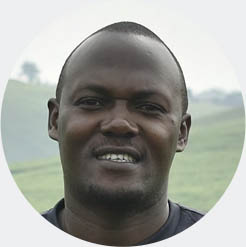
Interviewee Hamlus Owoyesiga
IOCROPS
 Year of establishment 2018
Year of establishment 2018 Current number of users More than 200
Current number of users More than 200 Operating in Republic of Korea
Operating in Republic of Korea Targeted sector Indoor crops (e.g. tomatoes and bell peppers in greenhouses)
Targeted sector Indoor crops (e.g. tomatoes and bell peppers in greenhouses)Services provided Autonomous crop management solutions, including climate monitoring in indoor farms; data analysis and decision-making platform; crop management advice and forecasts; automated cultivation; remote farm operations to manage farms across the world without the need for specialized greenhouse managers on each farm.
Targeted customers and users Medium- to large-scale greenhouse growers. It is estimated that in the Republic of Korea less than 10 percent of greenhouses are owned by women, and less than 30 percent by young people.
Business model and financial sustainability Revenue generated through sale of sensors and web-based solutions. ioCrops also rents out automated greenhouses and controls all greenhouse plant operations, ranging from climate and crop management to labour and post-harvest logistics management. Most of the investment is from venture capital funds, with limited contribution from subsidies.
Drivers Increasing need for automation solutions as farm sizes increase. Greenhouse coverage area is increasing, as is the number of large-scale producers. The younger generation is more open to IT solutions. Wages are increasing and labour supply is decreasing.
Barriers Scepticism among some farmers about high-tech solutions. There is also the risk that this technology will push smaller producers out of business.
Policy as a barrier or enabler The Government of the Republic of Korea is investing in high-tech greenhouses, including educating operators and allowing companies such as ioCrops to conduct experiments. At the same time, the Government is concerned that such solutions will harm small-scale producers, so there are parallel efforts to maintain more traditional systems.

Interviewee JinHyung Cho
Justdiggit
 Year of establishment 2009
Year of establishment 2009 Current number of users More than 700 000
Current number of users More than 700 000 Operating in Kenya, United Republic of Tanzania
Operating in Kenya, United Republic of Tanzania Targeted sectors Trees, grasses
Targeted sectors Trees, grassesServices provided Digital and communication solutions (e.g. SMS, phone apps, drones, satellite imagery, machine learning) to promote large-scale landscape restoration in Africa, such as turning rangelands degraded by Maasai pastoralists in Kenya into green, fertile land. Specifically, these solutions inform farmers about landscape restoration, monitor tree growth and landscape change over time, and can also calculate associated carbon sequestration volumes. Justddigit also helps women to sell indigenous grass seeds and crops.
Targeted customers and users Small-scale and subsistence farmers and pastoralists. Justdiggit also works with trainers – half of whom are women – who train farmers in agroforestry and regreening land.
Business model and financial sustainability Non-profit organization dependent on grant funding. It works with a large network of media partners who are active in the Netherlands and Africa to raise funds and create awareness. Justdiggit receives donations from individual consumers, private companies, larger institutions and funding schemes, as well as some family foundations. The organization has seen steady growth. Staff numbers increased from 4 to 40 over about seven years. It aims to become less dependent on donations in order to facilitate scaling.
Drivers Increased awareness of accelerating climate change. The solution increases crop yields and water availability, positively affecting incomes and livelihoods, and reduces soil erosion and runoff, benefiting soil fertility and moisture. There is growing interest in nature-based and regreening solutions.
Barriers Limited smartphone penetration, digital illiteracy and limited internet access. Digital capacity building of trainers is often required.
Policy as a barrier or enabler In Kenya, land subdivision can cause distrust as landowners decide whether the land remains public or is privately owned and subdivided into smaller plots.

Interviewee Sander de Haas
LELY
 Year of establishment 1948
Year of establishment 1948 Current number of users More than 25 000
Current number of users More than 25 000 Operating in Australia, Europe, North America
Operating in Australia, Europe, North America Targeted sector Dairy
Targeted sector DairyServices provided Robotics and (management) software solutions for dairy farming. Specifically, it provides stationary milking, manure and feeding robots, and is developing barn management solutions (to control gas emissions) as well as grass harvesting robots. In addition, the management software provides information and advisory services on all farm operations, including animal health and welfare.
Targeted customers and users Medium- to large-scale dairy farmers, not the very largest.
Business model and financial sustainability Revenue generated through sales of these solutions and service contracts. It offers financial and operational lease constructions, which lead to more adoption by farmers. It also receives funding through national and European Union grants. Turnover is estimated at EUR 650 million, an important part of which is reinvested in research and innovation.
Drivers Demand for more flexible working schedules and less drudgery; labour shortages; compliance with environmental regulations (e.g. emission reductions on dairy farms); concerns about animal welfare; provision of financial services; gains in energy efficiency and use of renewable energy sources. Solutions offered are easy to integrate for conventional farms.
Barriers Not mentioned.
Policy as a barrier or enabler On the one hand, policy-related adoption drivers are environmental and animal welfare regulations and subsidy programmes invest in barn solutions reducing emissions. On the other hand, adoption can be slow as farmers wait for subsidies before investing. Discussions on new regulations for free animal movements and natural behaviour needs new strategies to adapt the milking solutions offered at present.

Interviewee Martijn Bruggeman
Seed Innovations
 Year of establishment 2019
Year of establishment 2019 Current number of users 1 500
Current number of users 1 500 Operating in Nepal
Operating in Nepal Targeted sector Crops
Targeted sector CropsServices provided An Android app – PlantSat – for farmers to use satellite-based analytics to monitor crop performance, including identification of threats such as water and nutrient deficiencies or surplus, and to access and exchange agronomic information. Integrated services include: identification of production threats, calculation of nitrogen and plant moisture, farm calendar notifications, expert assistance, weather information, and recording of farm data. A simplified bundled service solution, it reduces the need for data connectivity (offline data entry) and lowers the cost of operation (e.g. by limiting the server space required to store data points).
Targeted customers and users Mostly medium- to large-scale farmers for satellite-based advisory services and market-oriented small-scale producers for generic advisory services.
Business model and financial sustainability Solution currently free for farmers. In the future it will sell annual subscription plans to insurance companies, who then gain access to the information collected and can thus monitor crop and farmer performance and eligibility for insurance claims. Approximately 40 percent of funding comes from grants.
Drivers Reduced need for connectivity and low cost of solution.
Barriers Scepticism towards new technologies.
Policy as a barrier or enabler The Government of Nepal supports low-income farmers to participate in insurance schemes by subsidizing 75 percent of their premium. Furthermore, there are no strict privacy protection, data security, or intellectual property policies or regulations to slow down adoption.

Interviewee Suman Ghimire
SeeTree
 Year of establishment 2017
Year of establishment 2017 Current number of users More than 3 000
Current number of users More than 3 000 Operating in Brazil, Chile, Greece, Mexico, Portugal, South Africa, Spain, United States of America (data analysis, research and development in Israel)
Operating in Brazil, Chile, Greece, Mexico, Portugal, South Africa, Spain, United States of America (data analysis, research and development in Israel) Targeted sector Fruit and nut trees
Targeted sector Fruit and nut treesServices provided Digital solutions through a data intelligence platform to monitor tree health, fruit optimization and growth, manage inventory and production, estimate yield, track farming operations and measure their impact.
Targeted customers and users Mainly large-scale growers, in addition to fruit cooperatives in order to reach small-scale growers.
Business model and financial sustainability Based on an annual subscription to access the data intelligence platform via either a web-based app or a mobile app. The services help growers to use resources precisely, conduct inventory management and make better use of labour hours. The platform currently generates annual revenue of USD 30–100/ha; the larger the landholding, the lower the price per hectare.
Drivers Huge demand among large-scale growers with large landholdings for solutions that increase productivity and resource-use efficiency, and reduce uncertainty regarding yield and market prices. There is also a growing interest in sequestering carbon to obtain carbon credits.
Barriers Scepticism of growers towards digital technologies and limited digital literacy, hindering understanding of the value of the solution from pilot demonstrations. Furthermore, growers expect a one-stop shop to implement recommendations made by data-driven decision-making and networking with local supply chain actors. In some regions, weak market linkages among input suppliers are slowing adoption and preventing some growers from accessing and implementing recommendations.
Policy as a barrier or enabler Not applicable.
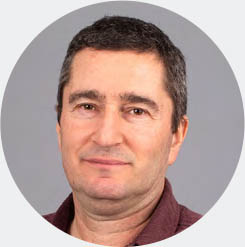
Interviewee Israel Talpaz
Sowit
 Year of establishment 2017
Year of establishment 2017 Current number of users More than 17 490
Current number of users More than 17 490 Operating in Ethiopia, Morocco, Senegal, Tunisia
Operating in Ethiopia, Morocco, Senegal, Tunisia Targeted sectors Fruits, cereals, rapeseed
Targeted sectors Fruits, cereals, rapeseedServices provided Decision support tools and information insights, mainly regarding irrigation, fertilization and yield estimation.
Targeted customers and users Large-scale agribusinesses and medium- and small-scale farmers. In Morocco, more than 20 percent of farmers served are women. SOWIT staff also comprise a large share of women (44 percent), and all employees are in the youth category.
Business model and financial sustainability Based on a yearly subscription. The annual price per hectare varies (USD 10–70) depending on the number of decision support tools requested, including both mobile and web-based multilingual access interfaces. Since its establishment, SOWIT has secured finance through equity fundraising and grants from development agencies such as the United States Agency for International Development. In 2021, grant funding represented 25 percent of turnover.
Drivers Impact of climate change and other factors on the availability of water for irrigation, with increasing need to optimize its use. Hence, the call for a system offering daily location-specific recommendations on irrigation. The solution can also optimize fertilizer use, whose cost is also rising. Increasingly, insurance companies need to offer affordable crop insurance policies. SOWIT offers an alternative to index-based insurance, as it can provide yield estimates based on the real situation. A farmer can insure a crop against the expected yield, which corresponds to the average yield in the specific agroclimatic zone.
Barriers In Morocco, technology import barriers and limited digital payment options for clients.
Policy as a barrier or enabler In Morocco, the Government is investing in innovating the agriculture sector, for example, promoting agricultural entrepreneurship among young people, reinforcing the role of agricultural cooperatives, and developing new subsidies for digital solutions. In particular, the Generation Green 2020-2030 strategy aims to connect 2 million farmers to digital platforms, including SOWIT. On the other hand, the absence of regulations regarding the use of drones represents a barrier to the development of the technology. For this reason, SOWIT switched to satellite remote sensing.

Interviewee Hamza Rkha Chaham
TraSeable SolutionS
 Year of establishment 2018
Year of establishment 2018 Current number of users More than 2 000
Current number of users More than 2 000 Operating in Cook Islands, Fiji, Papua New Guinea, Samoa, Solomon Islands, Tonga, Vanuatu
Operating in Cook Islands, Fiji, Papua New Guinea, Samoa, Solomon Islands, Tonga, Vanuatu Targeted sectors Crops, tuna, timber
Targeted sectors Crops, tuna, timberServices provided A set of digital tools that provide farmers with information about the agricultural industry, as well as about their own farm, including resources, inventory, sales and expenses. The solution also helps create market linkages. In addition, the company offers a solution focusing on tuna fisheries, involving tagging and tracking of tuna along the value chain. The solution includes fleet management, providing information on the crew, operational expenses, maintenance costs, tuna harvest details, etc.
Targeted customers and users Mostly small-scale producers, in addition to some medium-scale, as well as farmer organizations and agribusinesses (mainly those involved in exporting commodities). Women and youth represent, respectively, approximately 40 percent and 15 percent of users. Customers include mainly development organizations interested in data on a regional scale.
Business model and financial sustainability Farmers able to download solution at no cost, but tiered subscription payable by farmer organizations, agribusinesses, fisheries and processing plants wishing to access services. The company provides consultancy services, which represent the bulk of revenue, and it has received grants to fund its business.
Drivers Increasing interest among producers – especially exporters – in cheap, effective collection of data; increasing interest among farmer organizations in capacity building and advisory services; need to comply with food safety regulations and traceability. The COVID-19 pandemic accelerated uptake of and interest in digital solutions. Development agencies consider the capacity of TraSeable Solutions in networking across the region and data gathering as an interesting value proposition.
Barriers Strict data regulations rendering creation and management of digital solutions difficult. Digital literacy is low among farmers.
Policy as a barrier or enabler Not mentioned.

Interviewee Kenneth Katafono
TROTRO TRACTOR
 Year of establishment 2016
Year of establishment 2016 Current number of users 75 000
Current number of users 75 000 Operating in Benin, Ghana, Nigeria, Togo, Zambia, Zimbabwe
Operating in Benin, Ghana, Nigeria, Togo, Zambia, Zimbabwe Targeted sector Arable crops
Targeted sector Arable cropsServices provided Digital rental platform that matches small-scale producers with a vast range of agricultural machinery and equipment and with the owners who provide hire services. Recently, drone owners have begun to offer their services (e.g. mapping and spraying). All machines are equipped with TROTRO’s internet of things (IoT) tracking device.
Targeted customers and users Small-scale farmers, although some are medium- to large-scale, and increasingly companies for contract farming. Almost 40 percent of clients are women, and the company would like to increase this percentage.
Business model and financial sustainability Main revenue streams from the matchmaker fees (10 percent per transaction) received for each agricultural machinery service contracted out. Additional revenue is generated through sales of their IoT GNSS tracker device (purchasing this device is mandatory for owners renting out equipment through their platform). The company is profitable in all countries where it operates, except Ghana, possibly because only about 40 percent of registered users there are regular clients. The company partially relies on grants, which it primarily uses to expand the business.
Drivers Tractors unaffordable for most small-scale farmers, who must rent if they are to mechanize. The platform enables transparency and reliable access – not possible in traditional market mechanisms. Female farmers are increasingly using the service as it protects them from discrimination arising from social norms. Young farmers also prefer the service as they tend to be more dynamic and open to innovative solutions with some young people being trained as machine operators. The COVID-19 pandemic accelerated digitalization of agriculture and spurred this solution. Use of drones is driven by growing demand from farmers for accurate land data to help them obtain finance, credit and insurance.
Barriers Increasing fuel prices, making the service inaccessible for some farmers; lack of credit and finance for operators to buy machinery and then rent it out to farmers. Poor road infrastructure can prevent movement of the machinery to make the service available in different areas.
Policy as a barrier or enabler Provision of subsidies and incentives to farmers to produce staple crops encouraged mechanization, in addition to investments in infrastructure and digital technologies.

Interviewee Kamal Yakub
Tun YaT
 Year of establishment 2017
Year of establishment 2017 Current number of users More than 20 000
Current number of users More than 20 000 Operating in Myanmar
Operating in Myanmar Targeted sectors Primarily rice, mung bean, sesame, groundnuts, maize
Targeted sectors Primarily rice, mung bean, sesame, groundnuts, maizeServices provided Mechanization services in both delta and dryland regions of Myanmar. Tun Yat maintains its own fleet of tractors and acts as an intermediary between machine owners and farmers.
Targeted customers and users Mainly small-scale producers, but also medium-scale farmers. Approximately 30 percent of clients are women and 25–30 percent are youth aged up to 30 years.
Business model and financial sustainability Revenue generated by paying for the service, either per acre or per hour. The highest margins are generated by direct services using their own fleet. Smaller margins come from matchmaking services. Tun Yat also generates revenue by conducting research in South-eastern Asia.
Drivers Inability of farmers to afford their own machinery; unreliable service delivery of this machinery; increased penetration of mobiles and smartphones.
Barriers Increasing prices for inputs and fuel, with users able to bypass Tun Yat’s matchmaker service once they know each other; poor digital literacy and connectivity; low levels of trust (e.g. in mobile payments); need for technological handholding and capacity building.
Policy as a barrier or enabler The Government of Myanmar is committing to digital policies, but the current uncertain political environment hampers innovation and investment. Furthermore, existing policies related to digitalization and data use are more focused on cyber security and surveillance, which can also slow adoption.

Interviewee Hujjat Nadarajah
UrbanaGrow
 Year of establishment 2019
Year of establishment 2019 Current number of users Unknown
Current number of users Unknown Operating in Chile
Operating in Chile Targeted sector Leafy greens
Targeted sector Leafy greensServices provided Modular units for vertical farming in a highly controlled environment. Products are mostly leafy greens such as lettuce and basil. The farms use LED lights and sensors to control temperature and humidity, in addition to a water recycling system to minimize water consumption. Production is tailored to clients’ needs.
Targeted customers and users All operators at the end of the food supply chain, including retailers, supermarkets, restaurants, consumers and occasionally governments, who want to produce fresh leafy vegetables for sale or for their own consumption.
Business model and financial sustainability Still in the early phase but soon to become commercially available. It is also sustained by international collaborators (e.g. the Fraunhofer Institute, Germany). It plans to sell controlled-environment, modular farms, with everything needed for crops to grow according to the type and quantities of vegetables each client needs.
Drivers Increasing demand for fresh produce, especially in more remote areas where agriculture is not feasible due to climatic conditions. The technology also responds to the increasing demand for environmentally sustainable, high-quality, safe, fresh produce. The increasing adoption of 5G will work as a facilitator since good connectivity is required.
Barriers Scepticism among some agricultural producers and consumers about controlled agriculture. There is also a lack of awareness of climate change and other environmental issues, thus reducing the value added of the service.
Policy as a barrier or enabler Rising environmental standards in agriculture drives adoption; however, unclear regulations on the use of agrochemicals enables competitors to produce food – although of poorer quality – at lower prices.

Interviewees Maricruz Larrera and Eduardo Vásquez
ZLTO
 Year of establishment 2013
Year of establishment 2013 Current number of users 13 000
Current number of users 13 000 Operating in Netherlands
Operating in Netherlands Targeted sectors Horticulture, livestock (including dairy), arable crops
Targeted sectors Horticulture, livestock (including dairy), arable cropsServices provided Technical assistance and advisory services on digitization and data management. In cooperation with the Netherlands Enterprise Agency (RVO), the farmer organization, Southern Agriculture and Horticulture Organization (ZLTO), also connects farmers with suppliers and supports innovation processes for farmers, with precision farming and livestock production as core activities.
Targeted customers and users Members of the organization. Main activities targeted are horticulture, pig husbandry, dairy production and arable crop production.
Business model and financial sustainability Not directly applicable to ZLTO, as it is not a solution provider.
Drivers Familiarity with and interest in information and communications technology (ICT) among young farmers. Labour supply is another driver: there is lack of unskilled labour that drives the adoption of robotization and automation, and an abundance of skilled labour that wants, and is able, to work with digital technologies.
Barriers Benefits of investing in machinery and digital technologies not fully perceived by farmers. There is uncertainty about the monetary returns on investing in new equipment and the training to learn how to operate it.
Policy as a barrier or enabler No policy-related adoption barriers are perceived. In terms of drivers, ZLTO is running dissemination projects incorporating precision agriculture, automation and robotics. The European Union is also promoting an agricultural data sharing policy and considering making it a public good.

Interviewees Peter Paree (ZLTO) and Folkwin Polemen (RVO)




